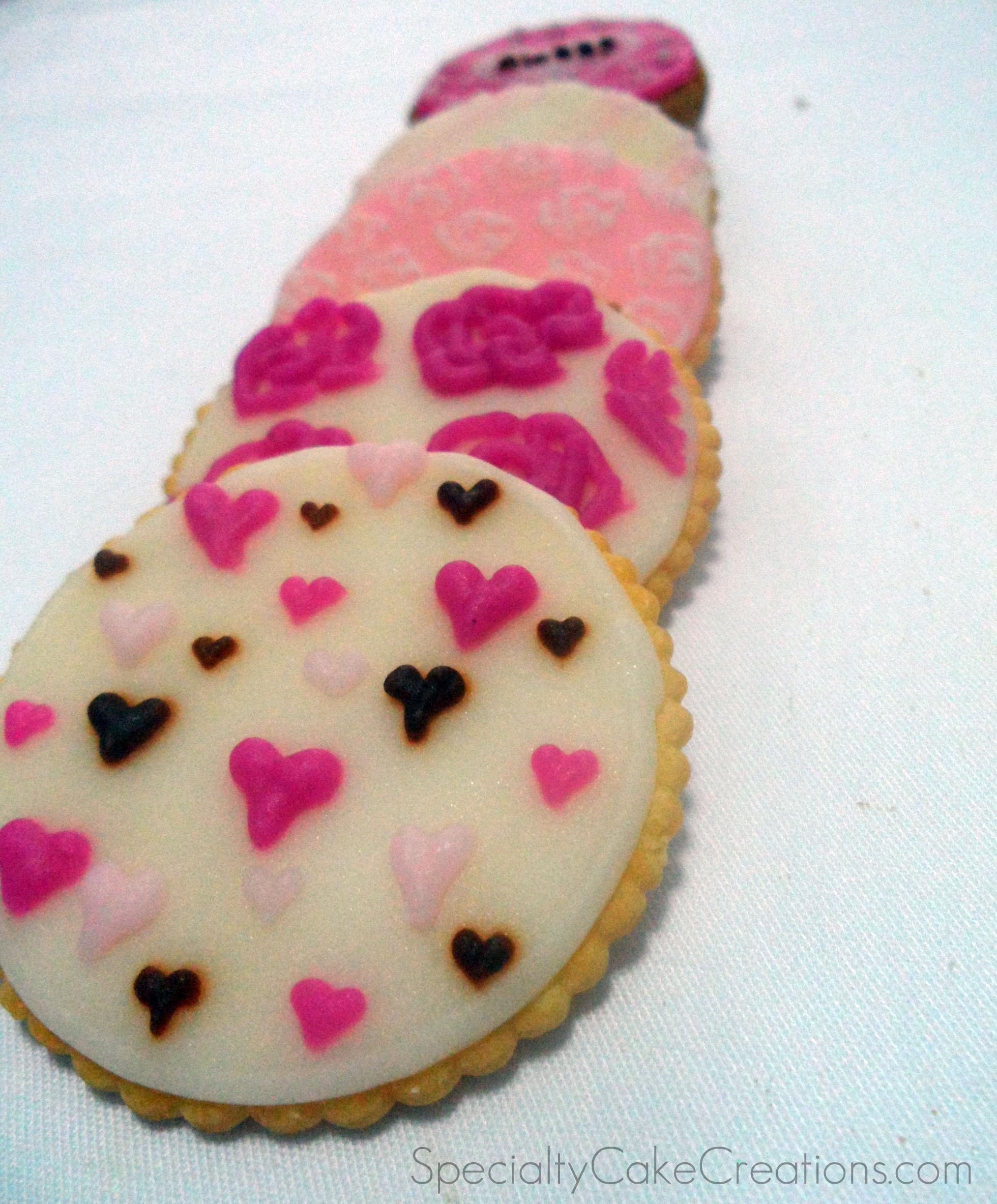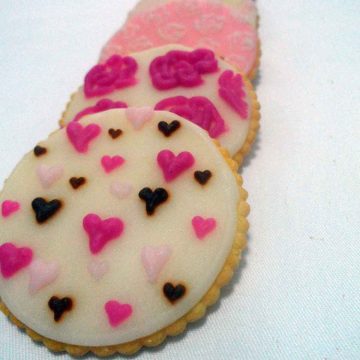This recipe for glaze icing is perfect for decorating cookies. It tastes fantastic, maintains its sheen and is a great alternative to royal icing.

I have been using this powdered sugar glaze recipe ever since I first dipped my toes into cookie decorating sometime in 2010. It is based on the glaze icing recipe by the amazing Amanda of “iambaker.”
At the time I choose this cookie icing recipe simply because it seemed easy and I had all the ingredients on hand. As simple and straight forward as the ingredient list happens to be, thankfully, so are the instructions!
Ingredients & Substitutions
- powdered sugar
- milk - or water, heavy cream, or substitute orange juice for a citrus glaze
- corn syrup
- lemon juice - optional but a great way to cut the sweetness of the icing
- vanilla extract - omit if you want pure white icing. Or use a clear extract. Almond extract works great for cookie icing.
Instructions
- Sift the powdered sugar to remove any clumps.
- Add milk, light corn syrup, lemon juice, and vanilla.
- Stir until well combined. If needed, add a little more milk.
- Optionally, color the icing. Use to decorate your cookies.
Hint: This glaze icing is also great to drizzle over other baked goods like muffins, cinnamon rolls, pound cake, coffee cakes, scones, doughnuts and more. The corn syrup can be omitted in that case.
Comparing Glaze Icing & Royal Icing
- Great taste: Whatever flavoring you choose, thats basically how your icing will taste, and sweet of course. Royal icing, especially if made with meringue powder can have a chalky flavor.
- More difficult to work with: Glaze icing pretty much always spreads out flat. This makes writing and intricate details quite hard to pipe. It can be done if you let the layers dry fully, but it takes up to 24 hours.
- Beautiful finish: glaze icing, since it has corn syrup in it, retains a nice sheen even after the icing dries. And if you want to increase the shine even more, you can adjust the recipe by adding more corn syrup and less milk for a perfect finishing touch.
- Mysterious white spots or blotches: Sometimes they appear out of nowhere on the cookies when the icing has dried. No one seems to know why, as it seems completely random when it happens and when not.
- No egg whites: one aspect that can be daunting about royal icing is the use of egg whites. Usually meringue powder or pasteurized egg whites are used, but it can still seem concerning. Luckily, glaze icing uses only straight forward ingredients you probably already have at home.
Find my Royal Icing recipe here.
Common Questions
Glaze is typically made by combining a liquid, such as water, milk, or juice, with a sweetening agent like sugar or honey. Sometimes flavorings, such as extracts or spices, are added to enhance the taste.
Glaze icing is a type of icing that is often made with powdered sugar, a liquid like milk or water, and flavorings. It is known for its glossy appearance and is commonly used to decorate baked goods such as cookies or donuts.
In baking, a glaze refers to a thin and often sweet liquid that is applied to the surface of pastries, bread, or other baked goods. It adds flavor, moisture, and sometimes a shiny appearance to the finished product.
Glaze icing is typically made of powdered sugar, milk or water, and sometimes corn syrup. The ingredients are mixed together to create a smooth, pourable icing that can be drizzled or spread onto pastries.
Frosting and icing are often used interchangeably to refer to thick and creamy mixtures used for coating or filling cakes. They usually contain butter or shortening and are spreadable.
Glaze, on the other hand, is a thinner and more translucent mixture used for adding a glossy finish to baked goods. It is often made with powdered sugar and liquid and has a more transparent appearance compared to frosting or icing.
Recipe

Glaze Icing Recipe
Ingredients
- 1 cup powdered sugar also called icing sugar or confectioner's sugar
- 1-2 tablespoons milk or water
- 1 tablespoon light corn syrup
- ¼ teaspoon fresh lemon juice increase to up to 1 teaspoon to taste
- ¼ teaspoon vanilla extract optional; or other flavoring extract like almond extract
Instructions
- Sift the powdered sugar into a small mixing bowl to remove any clumps.
- Add 1 tablespoon milk, light corn syrup, lemon juice, and vanilla.
- Mix everything together until well combined. If too dry, add a little more milk at a time (in ½ teaspoon increments) until it reached desired consistency.
- To test the consistency, lift out the whisk, mixing spoon or spatula and let the icing pour down. The icing ribbon should be visible on top of the remaining icing for a few seconds before disappearing.
- You can color the icing with gel food coloring or natural colors (beet juice, cocoa, spirulina, turmeric). Use the icing to decorate your cookies using a piping bag, squeeze bottle, small spatula, or even the back of a spoon.
- The icing will take about 24 hours to dry fully on the cookies.

